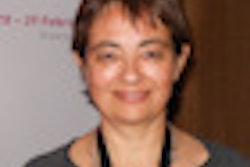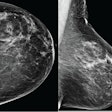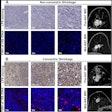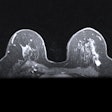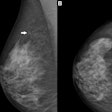The issue of dense breast tissue has long been a contentious one. As proponents of density notification pursue a legislative agenda, breast care centers must ensure they don't alienate women by opposing such efforts, according to a talk at the National Consortium of Breast Centers (NCBC) meeting in Las Vegas.
Indeed, breast care centers that get ahead of the curve by offering density-oriented services could find themselves at a distinct advantage by distinguishing themselves from the competition, said Jerry Kolb, vice president for business development at breast density software developer Matakina International, in a Sunday presentation at NCBC.
"We now have the research and the tools to provide individualized screening for women," Kolb said. "If you are proactive, you will differentiate your center, and this will benefit your mammography volumes."
A woman's breast density varies throughout her lifetime, but it is highest in pre- or perimenopausal women, Kolb said: 55% of women between 40 and 50 have dense breast tissue, while 33% of women older than 50 do. And studies have shown that increased breast density correlates with increased risk of breast cancer, as well as reduced mammographic performance.
"Dense breast tissue can mask nonpalpable cancers and hide architectural distortions, which points to a need for supplementary imaging for women with dense breast tissue," Kolb said.
Alternatives to mammography include whole-breast ultrasound and automated whole-breast ultrasound, breast MRI, or molecular breast imaging, all of which have their pros and cons. At the recent RSNA 2011 meeting, two studies found that screening ultrasound performed on women with high breast tissue density but normal mammograms detected three additional cancers per 1,000 women, Kolb said.
With the passage in 2009 of breast tissue density notification legislation in Connecticut, other states have been following suit. Texas and Virginia now have similar laws on the books; California, Kansas, Missouri, Nebraska, New Hampshire, New Jersey, New York, Pennsylvania, Tennessee, and Utah have all proposed legislation in the works, Kolb said.
But the initial implementation of breast density notification in Connecticut was not smooth, according to Kolb.
"Patients began to receive reports with density information included and to call their referring physicians, but most radiology groups had not informed their referring communities about the new law or the implications of breast tissue density," Kolb said. "No one had anticipated the demand for screening ultrasound, and wait times soared to two to six months."
The challenges of tracking breast tissue density still need to be addressed, according to Kolb. Radiology is not ready to cope with additional staffing needs, and there are concerns about false-positive rates. But arguing against breast tissue density notification has been shown to be a political faux pas: Medical societies that have opposed such legislation -- citing increased anxiety for women, false positives, and a lack of evidence that other modalities are effective in finding more cancers -- have lost credibility with women. Breast care centers can avoid these pitfalls by being proactive, not passive, and by supporting legislative efforts, Kolb said.
Communication is key
It's important that centers continue to emphasize to the women they serve that mammography is still the primary screening tool for all women, that dense breast tissue is normal in a large number of women, and that some women with dense breast tissue may benefit from adding screening ultrasound to their surveillance regimen. Breast centers should consider putting up posters with information about breast tissue density in their waiting and mammography exam rooms.
But it's also crucial that breast centers communicate with referring physicians, making sure they understand the importance of breast tissue density as a mammographic finding, Kolb said.
"This is a women's healthcare information issue," he said. "You do not want to be perceived as being against informing women about their health. Educate your providers, your patients, and your staff."






